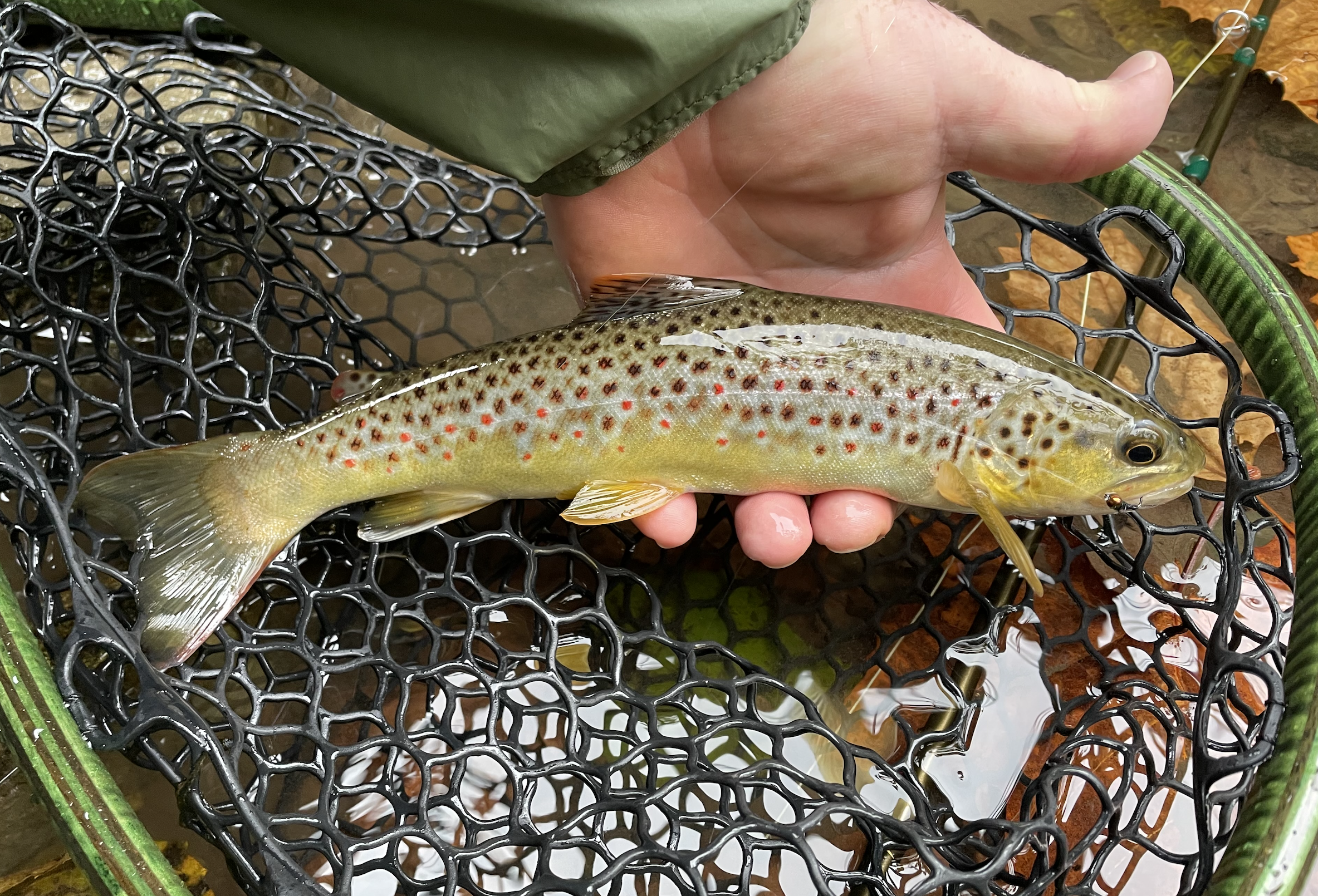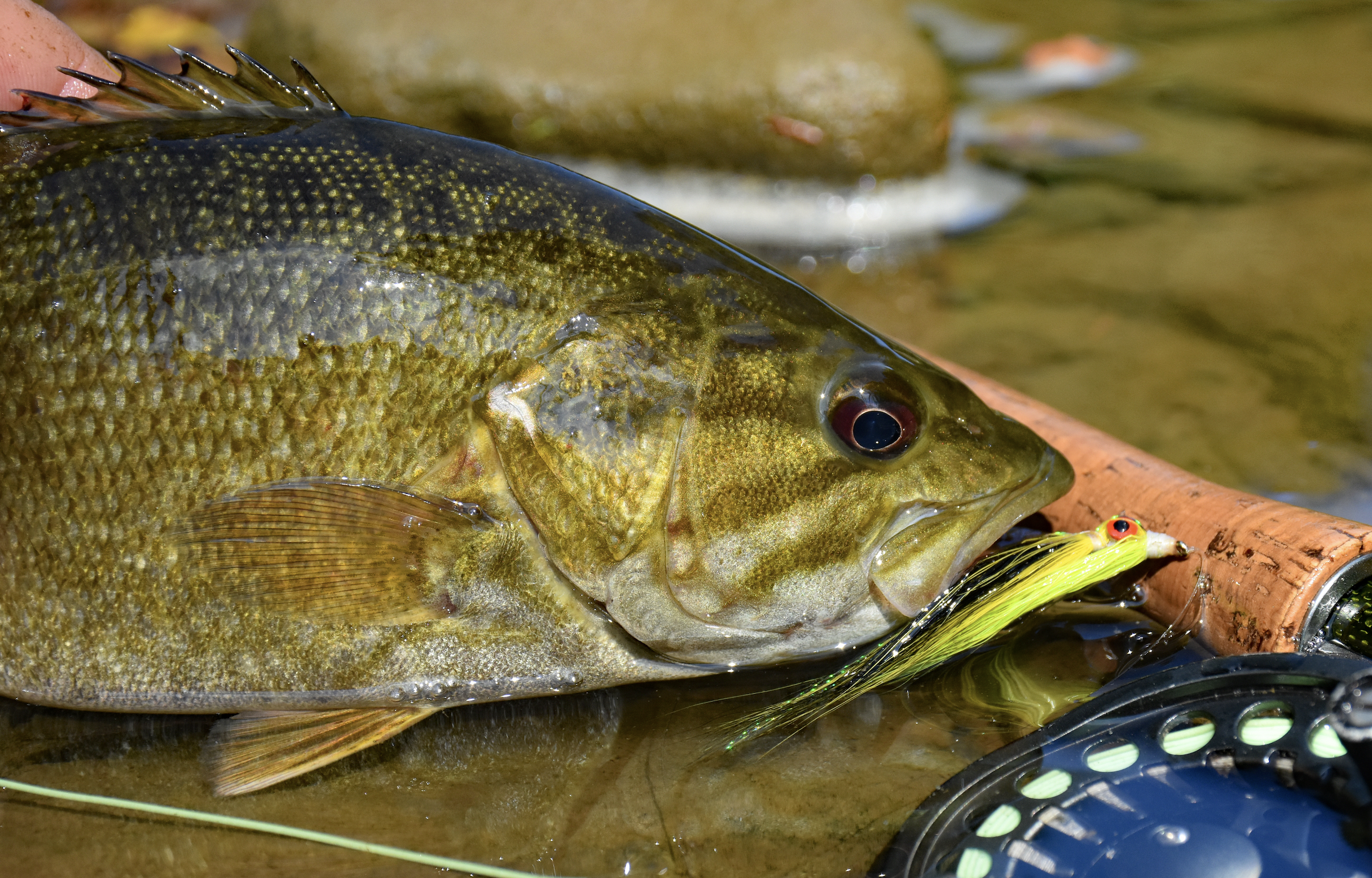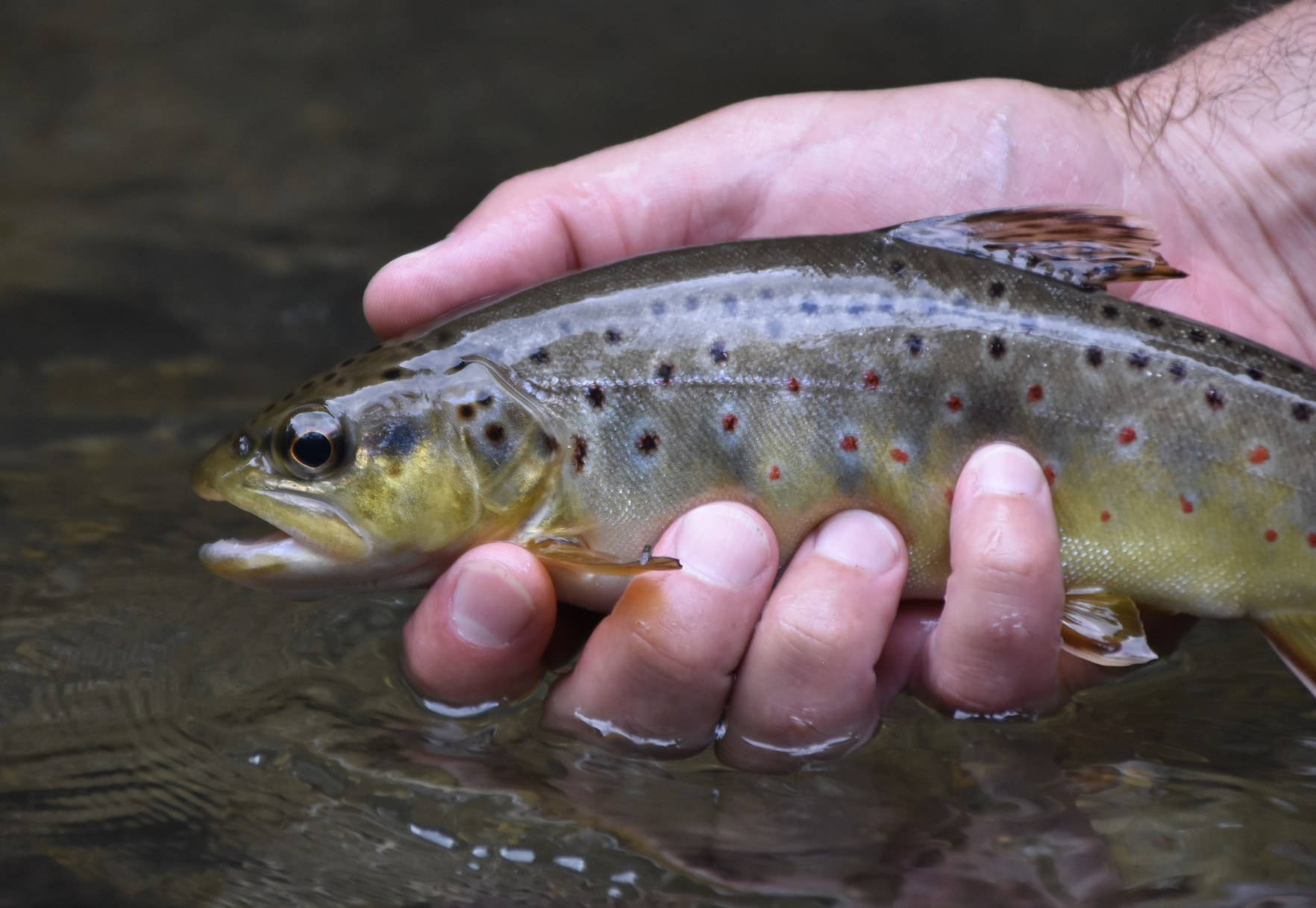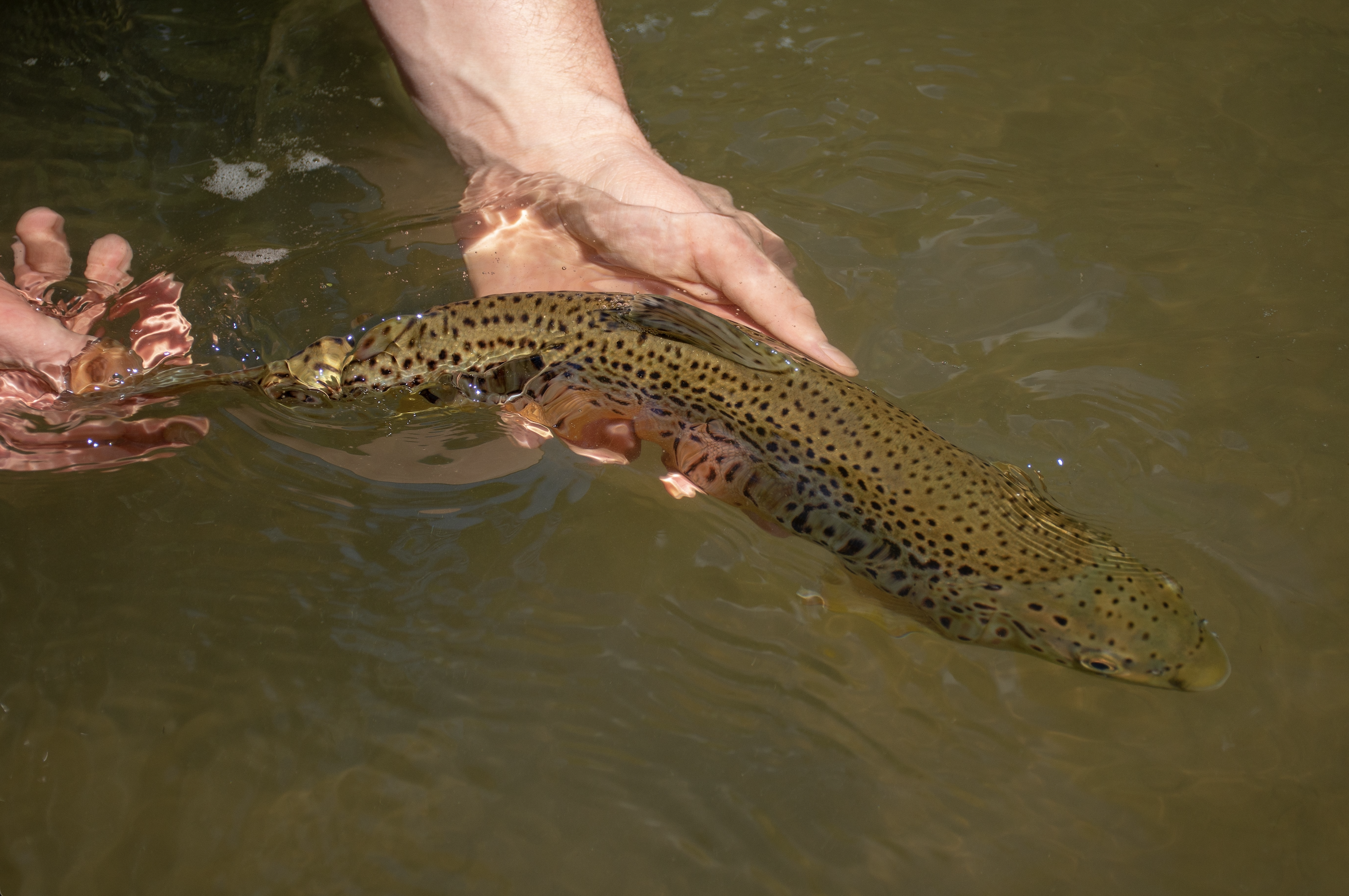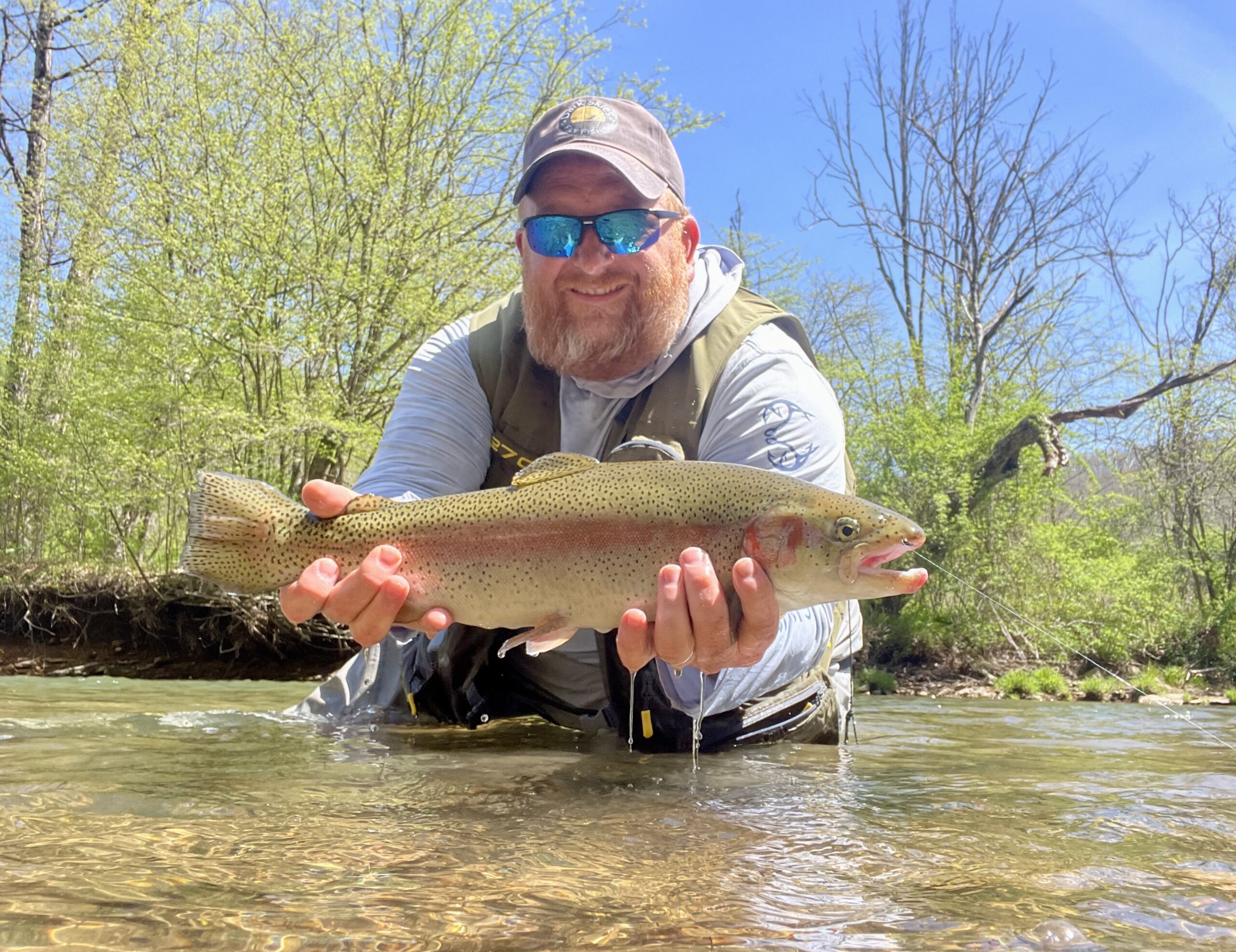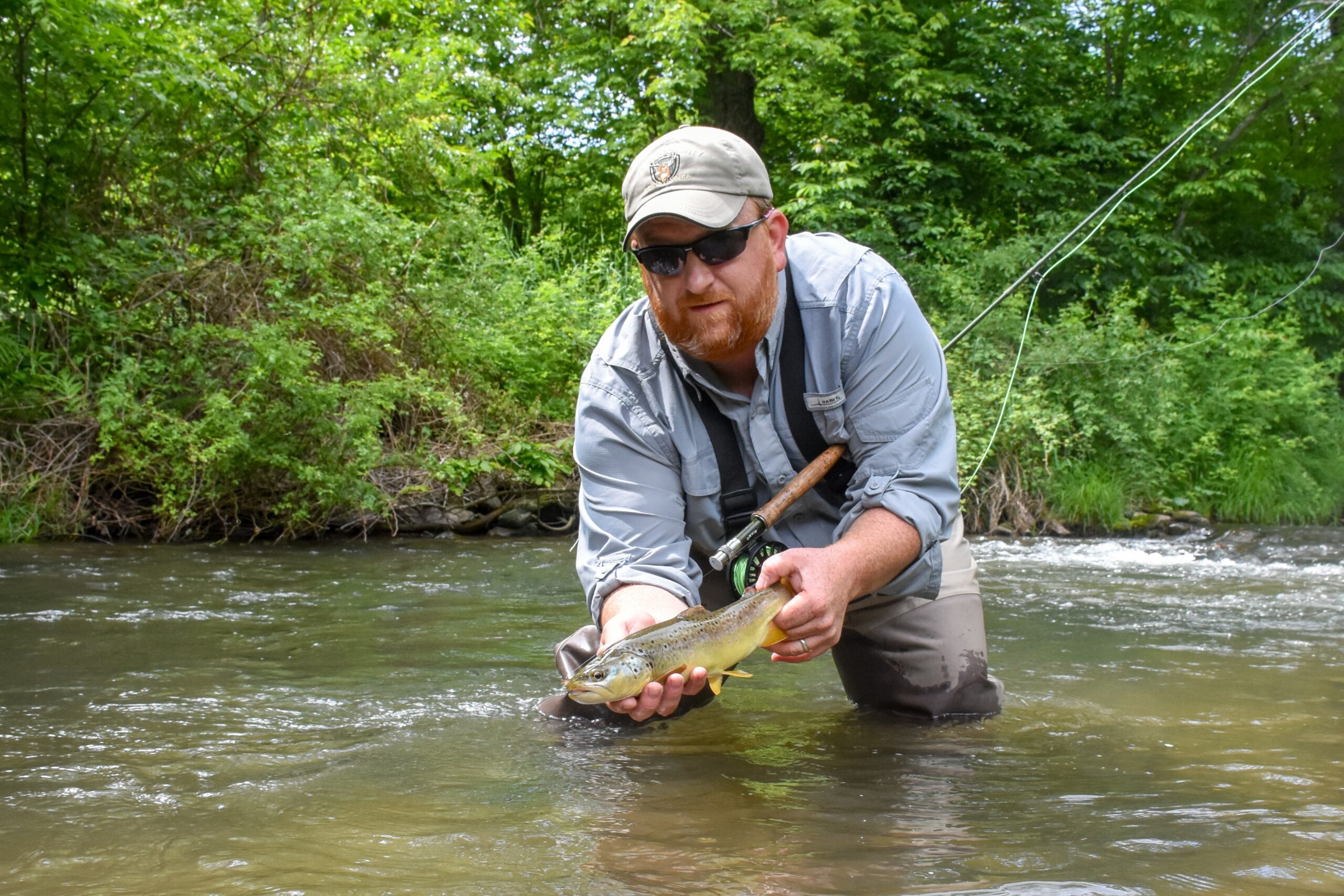By Ralph Scherder
When you catch a nice trout or bass, it’s only natural to want a photo to commemorate the moment, show friends, or share on social media. All are great reasons to photograph your catch. However, this process can be stressful for fish, and even though they are released afterwards, many can die hours or even days later from being mishandled for the sake of a picture. It doesn’t have to be that way. Following are a few basic guidelines to ensure great photos as well as healthy fish that live to fight another day.
Tips for Getting Great Fish Pictures
I first started writing for magazines over 25 years ago, and editors informed me right from the start the importance of quality photographic support. I quickly realized, though, that good photos weren’t a product of luck. Here are some quick tips for how I improved (and continue to improve) my fish pictures.
Net your catch
This will be the single most important thing you can do to improve the quality of your photos. Use a net with a rubber-coated basket that won’t damage the fish’s skin. Once the fish is in the net, move to shallow water and keep the basket submerged so that the fish can relax and breathe instead of flopping around and potentially hurting itself while you access your phone or camera.
Keep the fish clean
Don’t let it roll around on the ground or in the mud. Nothing ruins a photo like grass and dirt all over the fish, and it’s not good for the fish either because it damages the protective slime on its skin that helps it fight off disease and fungal infections.
Get low and close
I always like to get low and take the photo eye level with the fish. This helps eliminate glare, too, so that you can see the natural coloration of the fish.
Use a prop
One of the benefits of netting fish is that the net can also be a cool prop to help show proportion. I often lay my fly rod alongside the fish, too, which gives it a classic look.
Avoid the squeeze
Many anglers tend to hold their catch way too firm or do a “knuckle-hold” where their fingertips dig into the fish’s belly. Not only can this cause internal damage to the fish, but it makes for a lousy photo. Gentle is best. And if you’re using a net, the fish will be more relaxed instead of flopping around, which will make it easier to hold steady for a photo.
Use the self-timer option on your phone
This is one of the main ways I get good selfies with a catch. I prop up my photo against a rock, log, or backpack on the stream bank and flip the screen so that I can see myself and how the shot looks. I then engage the 10-second timer, which allows me enough time to get in position and lift the fish out of the net for a photo.
Have a plan
I often scour articles and websites for photos that catch my eye. I then keep those in mind next time I’m on the water. When I catch a fish, I already know how I want to set up the shot.
Also, remember the “keep ‘em wet” principles, which we’ll discuss next.
Keep ‘Em Wet Principles
There are three basic “keep ‘em wet” principles, which are universal rules to help anglers manage the factors that are within their control while catching and releasing fish. While these principles will improve the survival rates of released fish, they can also help us get better photos of our catch while becoming more ethical anglers.
Minimize Air Exposure
Fish get oxygen by moving water over their gills. Every time a fish is lifted from the water, it’s basically holding its breath. More than that, they’re holding their breath after the stress of being caught. I don’t know about you, but if someone told me I had to hold my breath for 30 seconds immediately following a strenuous workout, I would be in trouble!
One of the biggest mistakes I see anglers make is that they hold their catch out of the water while digging through their pocket to find their phone. By the time they access their phone and get ready to snap the photo, the fish has been out of the water for over a minute. This is why netting your catch is so important. It buys you time to get into position while allowing the fish to breathe. When you’re ready for that selfie, simply lift the fish up out of the net, snap a quick photo or two, and then gently release it back into the water.
Eliminate Contact with Dry Surfaces
As we discussed, fish have a protective slime that helps them fight off diseases and fungal infections. Every time a fish comes into contact with a dry surface, including our hands, that slime is compromised, so even if a fish swims off perfectly fine upon release, it can succumb to infection days or even weeks later. This is why wetting your hands before handling fish is extremely important.
Also, I’ve found that wetting my hands and keeping the fish wet actually makes for a better photo. The moisture makes the color more vibrant and the fish looks healthier, which it is.
Reduce Handling Time
Every second counts with catch and release. Being caught is stressful for fish and can cause excessive amounts of lactic acid buildup in their muscles and blood. This can result in physiological imbalance, muscle failure, and death. If you’ve ever played a fish to exhaustion and had to “revive” it, then you’ve probably witnessed this firsthand when the fish wants to roll over and go belly up. Sure, the fish may recover enough to swim off, but its chances of survival are greatly reduced, and in many cases you’re probably better off just keeping that fish for dinner.
Having a plan can help you reduce the handling time so that you can still get a great photo while ensuring the fish swims off just fine. Carrying pliers and using barbless hooks makes hook removal easier and reduces handling time, too. A quick and ethical release is the best way to ensure any fish’s survival.
Final Thoughts
First of all, there’s nothing wrong with harvesting a few fish to eat. It’s a reminder that the essence of fishing is sustenance. One of my little pleasures is occasionally keeping a mess of panfish or stocked trout and cooking them up that night for my wife and kids. We enjoy a great meal, and I get to teach my kids that not all food has to come from the grocery store.
However, catch and release is an important part of conservation and ensuring a healthy and sustainable resource that can be enjoyed for future generations. It’s also a vital part of improving native fish populations by allowing more fish to reproduce and thrive in our ecosystems. Keep in mind, though, that just because you released the fish doesn’t mean it will survive. There’s still a mortality rate (approximately 3.9% according to one study) for fish that are caught and released, and that mortality rate increases dramatically if the fish is mishandled.
Getting good photographs of your next catch doesn’t have to be a one-or-the-other choice between ethics and conservation. You can have both while still getting photos to look back on someday and remember a catch, a fishing trip, or even just to share on social media or with friends.
About the author, Ralph Scherder:
Ralph Scherder is an award-winning writer and photographer whose work regularly appears in American Fly Fishing, Bowhunting.com, Fur-Fish-Game, Pennsylvania Angler & Boater, Pennsylvania Outdoor News, and many others. He lives in Coudersport with his wife Natalie, two kids Sophia and Jude, and two dogs Trapper and Huckleberry Finn. Read more of his work on his blog, www.DarkSkiesFlyFishing.com.
Related Articles
Mark these 2025 PA Great Outdoors photo contests on your calendar
Read MoreHow to get kids started with fishing
Read MoreNew sculpture made of recycled bicycles makes a splash along rail trail in Kane
Read MoreAuthor: Guest Contributor
The Pennsylvania Wilds is home to more than 2 million acres of public land, 50 state game lands, 29 state parks, 8 state forests, 2 National Wild & Scenic Rivers, abundant wildlife, hundreds of miles of land and water trails, some of the darkest skies in the country, and the largest elk herd in the northeast.
The PA Wilds team is grateful to share the many stories of this region through the words and images of our talented guest contributors.



